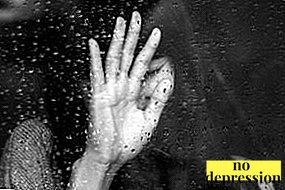Children's fears, parenting defects and behavioral pathologies require competent and careful correction.
Beloved by many parents method of "carrot and stick" It is often ineffective in solving problems.
Here come to the rescue therapeutic tales, which positively affect the mood and behavior of babies.
What is it in psychology?

All problems come from childhood.
If at a tender age parents did not pay enough attention to raising their baby at an older age, the child will be confronted with complexes, blocks and unworked internal conflicts.
"Fairy tale therapy" - This is the direction in psychotherapy, through which correction of behavioral reactions, phobias and fears, the development of creative potential and the expansion of consciousness.
This method is successfully applied to patients of different age groups. But more often the help of fairy tale therapy is resorted to in the case of children's behavioral pathologies.
Among the scientists who investigated the method of fairy tale therapy are I. Vachkov, T. Zinkevich-Evstegneeva, E. Lisin and other respected experts.
Types of fairy tales
Fairy tale therapy method includes five types of fairy tales:
- meditative;
- psychotherapeutic;
- didactic;
- psychological;
- psychocorrectional.
Didactic tale - The most simple and easy to read. They are used when working with children of primary school age and preschool children. The task of such tales is to transfer the skills and teach the child new knowledge with the help of an example.

The characters of such therapeutic stories perform simple tasks and explain why this skill is so important (how to cross the road, do the dishes yourself, be polite, clean up toys, etc.).
Due to the fact that the fairy tale “animates” objects and colors simple actions with a taste of magic, a very effective agitation of the kid to the correct actions is obtained.
Psychological tale - A psychological tale, like a didactic one, teaches your child the correct behavior using the example of fictional characters.
But if the didactic version concerns the household side of life, then the psychological one affects the sphere of personal growth.
Here the narrator goes to high categories, telling about the manifestations of good and evil, why love others, why it is so important to appreciate all that you have.
Psycho-correctional tale - This is a fictional story that changes a person’s behavior. The basis of such tales always take a comparison.
In the first case, the hero acts “badly” (i.e., ineffectively), and then the listener is shown an alternative model of the hero's behavior.
As a result, the baby does not just listen to the boring lectures from the parents. He himself concludes how to behave, based on the material heard.

Psychotherapeutic tale - This is the most profound and effective type of fairy tales.
These tales are filled with wisdom, which helps the listener to cope with their fears and complexes, to survive psycho-emotional trauma, to get out of a difficult life situation.
Most of the psychotherapeutic tales created on the basis of spiritual and religious sources (parables).
Meditative tale - The most difficult of the arsenal of fairy tale therapy. It does not require a logical structure, and a clear storyline.
The main condition - bright characters and images that can be easily visualized. It is important to immerse the listener in a fairy tale at the expense of maximum interest and concentration.
What is applied: goals, objectives and functions
Fairy tale therapy is integrated approach to raising a child. But if you disassemble the process of education through therapy into components, you can get a whole list of tasks that this wonderful method solves:
- Education of positive human qualities. The child adopts a model of behavior in fairy-tale characters. He condemns negative characters and empathizes with positive characters. And after listening to the material, the kid wants to identify himself as goodies and imitates his favorites.
- Learning in the form of a game (without violence). A fairy tale is entertainment. But plunging into the magical worlds, the child learns something new from the heroes of the fairy tale. These can be figures, geometric figures, historical facts, country names, interesting customs, etc.
- Emotion practice. At the moment of immersion in a fairy tale, the child sympathizes with the characters, rejoices with them, worries, laughs and cries. But the baby is not just experiencing certain feelings. With the help of the narrator, he learns to call these emotions by their names, to distinguish and classify them. This practice helps the formation of personality, because in the future a person will be able to analyze his behavior and find the root causes (emotions) that lead to certain actions.
- Instilling base values. Honesty, justice, help and love for the world. The importance of these concepts perfectly reflects fairy tales. They also show the kid that good always triumphs over evil.
- Examining relationship patterns. How to help your child find his place in the world? With the help of fairy tales. Examples of heroes - this is the easiest way to understand the types and models of relationships.
The child understands how to behave in society, communicate with others and maintain friendship.
- Treatment. The loss of a loved one, the death of a pet, cruelty on the part of adults and children, vaccinated fears and phobias. A child who does not have enough knowledge and life experience cannot cope with these problems on his own. Fairy tales come to the rescue, which in a mild form and with the help of images help to get to the bottom of the problem. Fairy tales allow you to look at the situation from the other side and calm the heartache, to find justice.
- Relaxation and rest. While listening to meditative fairy tales (without negative characters), the kid relaxes, is charged with positive and learns to be in a flow of harmony with himself and what is happening around him.


Functions of the tale:
- diagnostic;
- prognostic;
- therapeutic.
Principles of the method
In order for the tale to have the desired effect, you need to stick to basic rules:
- History should be identical to the problem of the child, but not to be an actual retelling of this problem (not to have direct intersections).
- She must have alternative (substitute) behavior. It is not enough just to show the child that his behavior or conclusion is wrong. It is necessary to suggest another, correct solution to the problem / way out of the situation / behavior.
- Fairy tale should not be abundant in many images and solve several problems at once. As a medicine, it should affect one "disease".
Otherwise, the child’s attention will spread out and the baby will not be able to draw conclusions.
- To a fairy tale acted need to tell her several times. It does not have to be the same story. You can tell different stories on the same topic. So the material is accurately digested.
- You can not draw conclusions for the child or explain the moral of the tale. The essence of therapy is that the child himself should work through internal problems with the help of the material he has listened to. You can help your child by asking leading questions or discussing a fairy tale after reading it.
Examples
An example of a psychological tale / parable for preschoolers 3-4 years old will help orient and independently compose a fairy tale.
Noble Mouse

He became a little mouse cheese to steal from a mousetrap.
Yes, so neat and quiet he did it, that never got caught!
But what was most surprising was that the mouse did not touch the cheese from the table. And even if a piece of master cheese lay in the most conspicuous place, the animal still ate only the one that got out of the trap.
- Why? - As an old cat asked a little mouse.
- I do not want to steal cheese from the owners and spoil their mood! said the little mouse. - I can be content with my cheese ...
“What an honest and noble little mouse!” The cat decided, and told the hostess about everything.
Since then, the owners have stopped putting mousetraps, and changed them into small bowls, in which there was always a piece of cheese for a mouse. After all, the owners of the house were noble people.
Defenseless
The dog barked loudly, trying to break the hated chain. In front of her, trying to merge with the fence, mewed a little kitten. He is very afraid of a big and angry dog. Nearby were two boys. Hearing the barking, they forgot about the ball and began to observe for what is happening.
A woman appeared in the window. Seeing the kitten in trouble, the woman hurried to drive the dog away. Then she angrily pulled out two friends:
- Are you not ashamed?
- What should we be ashamed of? After all, we just stood nearby, doing nothing! the guys exclaimed.
- This is what should be ashamed of! the woman said angrily.
Angry cat

Cat Anya could not find peace. She was tormented by the envy of the yard dogwho lived in his little booth.
The competition is so tiny, and the master's house is so big!
But the booth after all belongs exclusively to the dog. A cat shares his corner with people. Hence envy.
Became a cat complaining about the dog. She quietly purred that the dog was lazy and stopped protecting the house.
Smart owners kicked the dog out of the booth and chained evil catso that with enthusiasm guarded the yard. And the dog was allowed into the hall - to live out the century!
Books Vachkova
Igor Vachkov - Doctor of Science, Professor, member of the Presidium of the Federation of Educational Psychologists of Russia, President of the Society of therapists and the author of more than 50 books.
Since he is a domestic specialist, his methodology is most suitable for the mentality of children in the CIS camp.
His books are recommended for parents to read.who want to use fairy tale therapy to educate their children:
- "Introduction to fairy tale therapy";
- “Fairy tale therapy. The development of self-consciousness through a psychological tale. "
Techniques and techniques of writing

Conventionally, all therapeutic tales can be divided into two categories:
- fairy tales about a child;
- fairy tales about the child.
In the first case, the hero of adventure the child himself standswhich, in the company of fabulous friends, conquers the seas and oceans, opens new lands and fights evil.
And in the second case, fairy tales describe the situation in the child's life, but the model of basic and substitute behavior is transferred to the heroes.
How to write a fairy tale? Can use for this frame or script from:
- real life situations (moments of disobedience, fear, manifestations of negative emotions, etc.);
- folk tales;
- parables;
- own life experience.
How is the therapy?
Selection of material for fairy tale therapy should be done individually, based on the features of the child. But for greater efficiency better stick to the script:
- Relaxation and preparation (for this you can use a light meditative tale).
- Reading fairy tales (not necessarily limited to the oral form of presentation, in the course can go dolls, paper figures of characters, toys, etc.).
- Discussion and analysis (the reader asks the child leading questions, is interested in his opinion and guides the child at the time of the formation of conclusions).
It is also very important to use the rituals of entering and exiting the tale so that the child can easily enter and return from the dramatic / magical reality to the familiar one.
To do this, you can draw a magic circle, scatter "magic dust" and do any simple actions that will mean the beginning of therapy.
Trainings and classes

Loving parents can apply fairy tale therapy by myselfas a method for the development and upbringing of the child.
But if the baby has problems (acute phobias, regular tantrums and an extreme degree of disobedience), you should resort to the help of specialists.
A good effect can be achieved when working in a group. (on trainings and lessons on fairy tale therapy).
Benefits group methods:
- comfortable environment (it is easier for children to transfer therapy in the company of children);
- involvement (in some trainings, participants play fairy tales or individual episodes from fairy tales, supplement fantastic stories with games and exercises to anchor the material).
Fairy tale therapy is a truly wonderful parenting method that will easily unite a parent with a child, help you find a common language and will not make you bored.
And even if you do not consider yourself a talented storytellerIt is worth trying to introduce this method into the child's development plan.
Fairy treatment of behavior problems in children:



